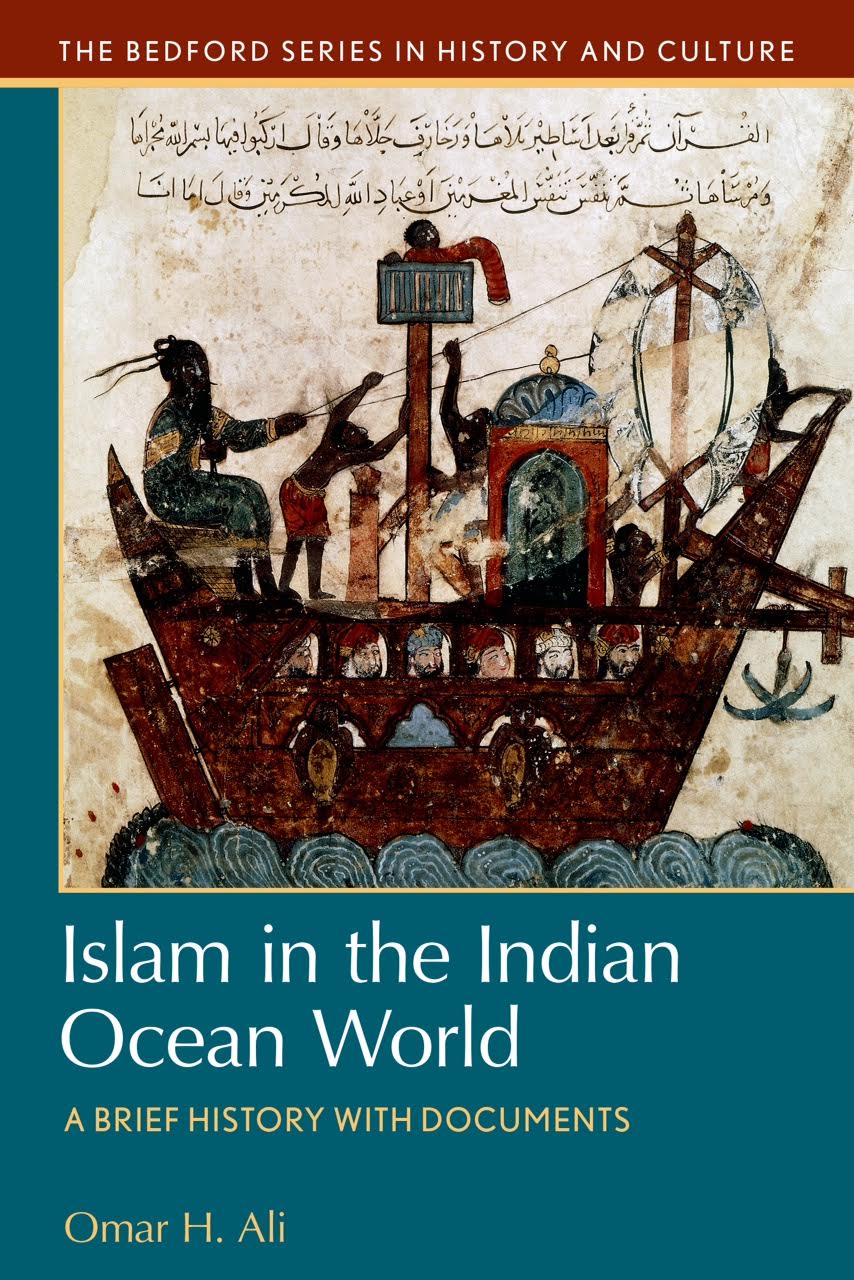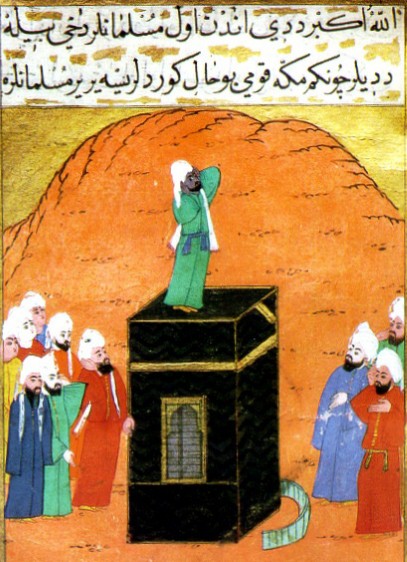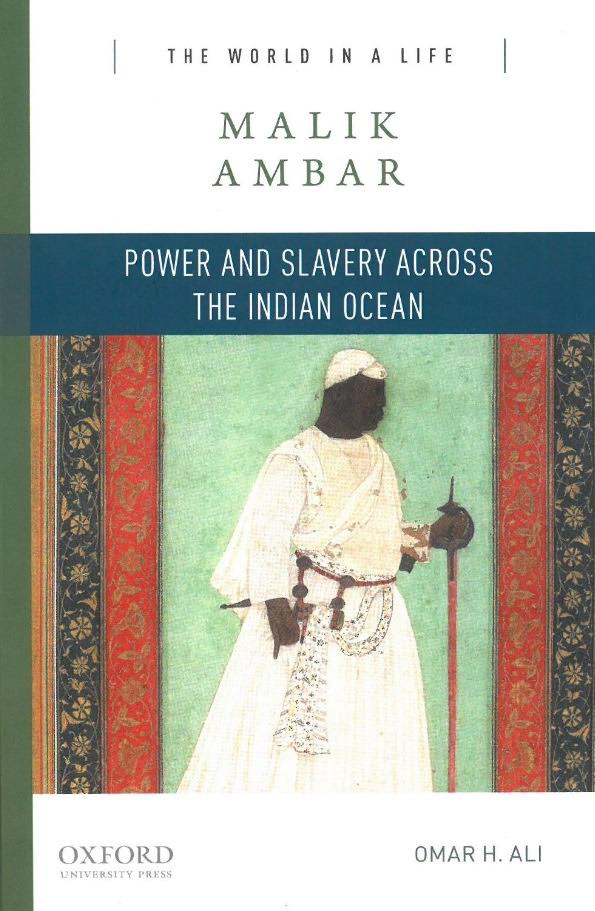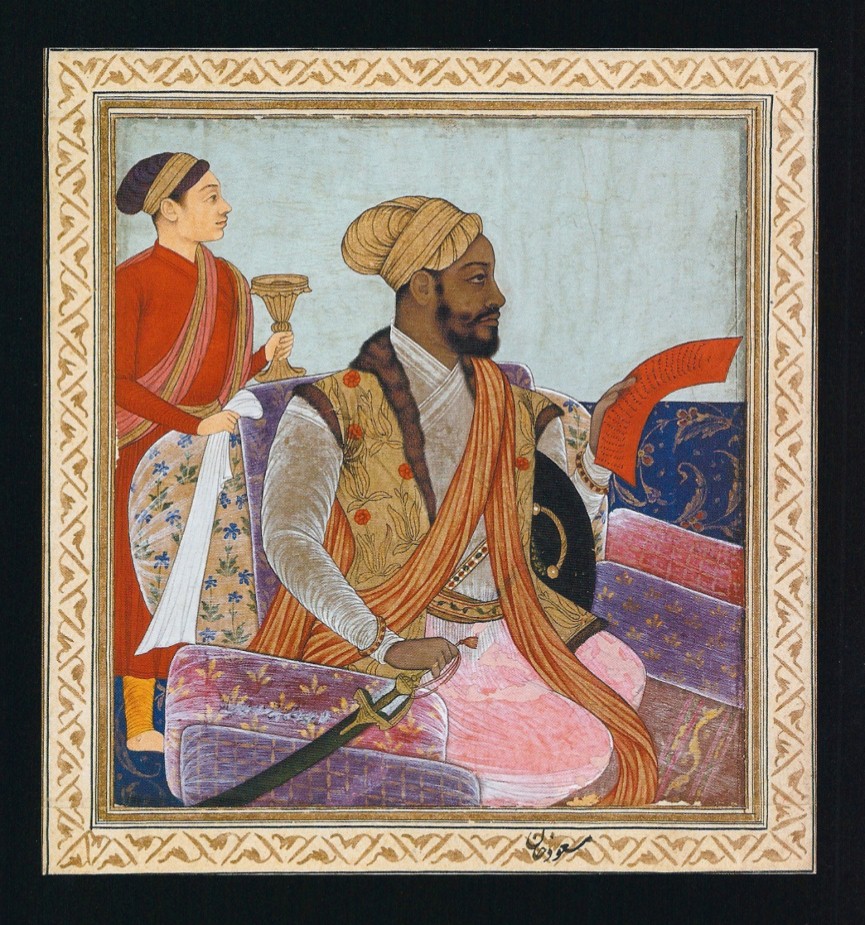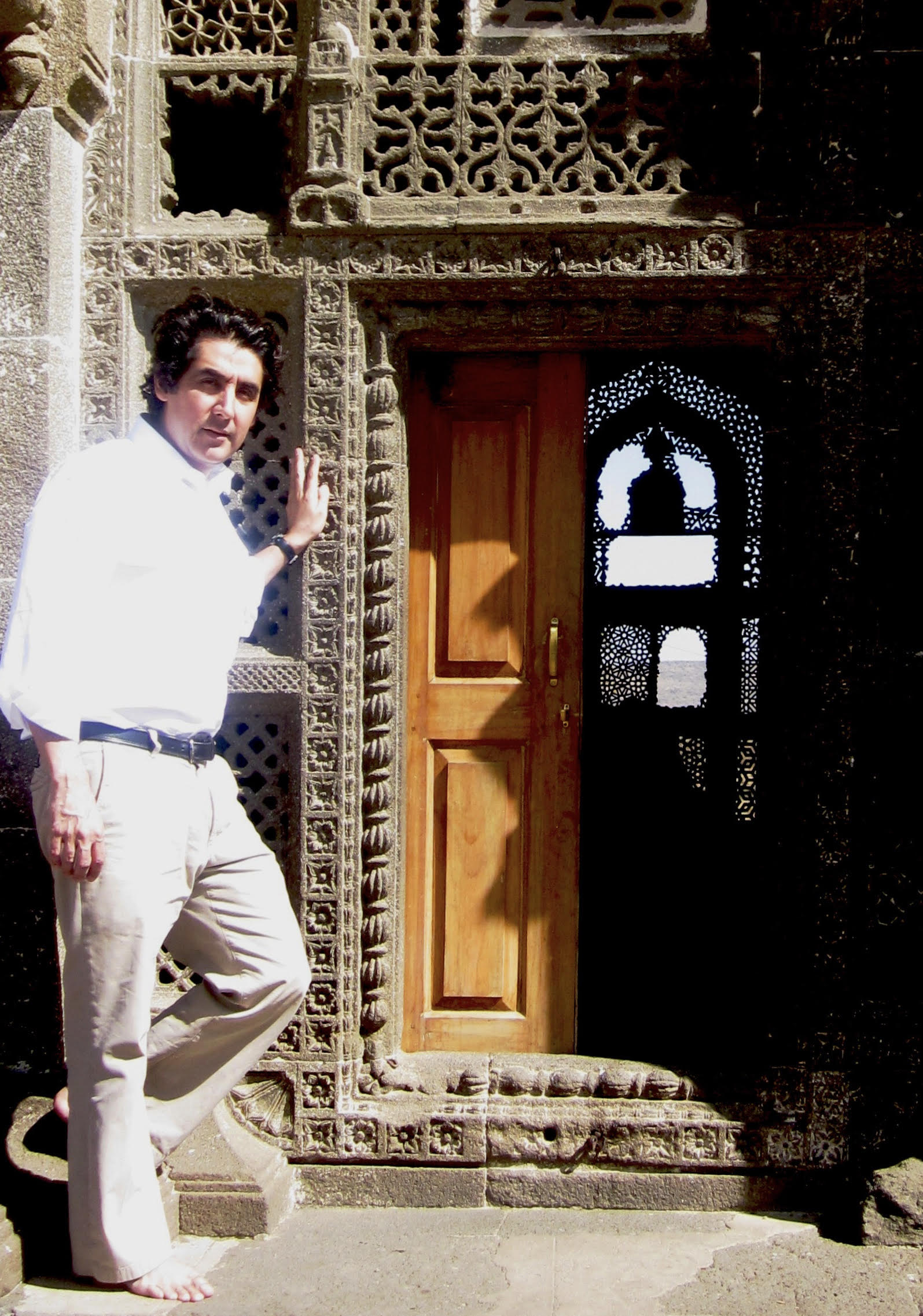The African Diaspora (the free and forced migration of Africans and their descendants) in the Indian Ocean world precedes that of the Atlantic world by over one thousand years. The intersection of Islam (which emerges in the seventh century in western Arabia) and the African Diaspora in the Indian Ocean world may be seen in the life of Bilal Ibn Rabbah (“the Ethiopian”), Islam’s first mu’azzin (caller to prayer). Born into slavery in Mecca to an African mother and an Arab father, Bilal heard first-hand Muhammad’s message of there being only a single, compassionate god, Allah. Moved by Muhammad message, Bilal became a Muslim, defying his slave master Umayyah ibn Khalaf, who insisted that all of his slaves acknowledge the lower deities Lat and Uzza (two of Allah’s daughters in his own belief system). Bilal professed his newfound faith: la illaha ill-Allah (“there is no god, but Allah”). For this act of insubordination, Bilal was forced onto the dessert floor and had a boulder rolled on top of him. But even as he was being crushed with the additional weight of a fellow slave ordered to sit on top of him, Bilal refused to recant, repeating, if only barely, the word ahad: “only one.” Hearing of the obstinate slave, one of Muhammad’s close companions, Abu Bakr, manumitted Bilal. Liberated, Bilal would go on to become one of the key leaders of the early Muslim community and—most famously—Islam’s first mu’azzin. Over the next centuries, Bilal’s azzan—the powerful, melodic call to prayer which begins with the declaration Allah-u-akbar (“Allah is great”)—would echo across the Muslim world and much of the African Diaspora.
See Ethiopian, East African, and Indian Ocean Research Network
BOOKS
Omar H. Ali, Malik Ambar: Power and Slavery Across the Indian Ocean (New York: Oxford University Press, 2016)
Omar H. Ali, Islam in the Indian Ocean World: A Brief History with Documents (Boston, MA: Bedford St. Martin’s Press, 2016)
ARTICLES AND ESSAYS
Omar H. Ali, “Malik Ambar: The Legacy of an Ethiopian Ruler in India,” The Reporter, August 2011
INTRODUCTION, “The African Diaspora in the Indian Ocean World” link
Omar H. Ali
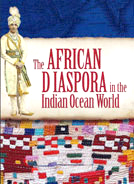
When we think about the African Diaspora, most of us turn our attention to the rich array of images, cultures and histories of black people in the Atlantic world. This diaspora, beginning in the 16th century, included an estimated 10.7 million forced migrants—about 2 million had died during the Middle Passage—from West, West-Central, and Southeastern Africa whose labor, creativity, traditions and struggles have made much of the world what it is today. However, there has been a far older dispersion of Africans through the Indian Ocean, which has parallels to the Atlantic migration but also a number of significant differences. It began well over a thousand years before and likewise had a direct or indirect impact on tens of millions of people through personal contact, cultural influence or the fruits of black labor, yet it remains the lesser known of the two major migratory trajectories of Africans in the world.
Archeological and genetic evidence indicate that between 40,000 and 50,000 years ago, Africans began migrating across the Middle East and South Asia in waves of humanity that populated Eurasia. Since antiquity regular contacts may be seen between Africa and Asia with sub-Saharan men and women appearing in the art of South and Southeast Asia. However, the historically documented dispersion of Africans in the Indian Ocean world was largely the product of migrations (voluntary and forced) beginning in the first century and continuing through the 20th.
Sweeping across the Indian Ocean and its several seas and adjoining bodies of water, lateen-rigged ships—dhows—bearing Africans were propelled by seasonal winds that blew from the southwest for part of the year and then reversed direction. Over nearly 20 centuries Africans journeyed to distant lands often radically different from their own—geographically, linguistically and culturally. Initially, most of these people from dozens of ethnicities and societies, and practicing various religions, came from the coastal areas of eastern Africa. Over time, more came from the interior Great Lakes region, followed by Central Africa.
Like their counterparts in the Atlantic world, most African migrants to Asia were enslaved as captives of war, the victims of outright kidnapping, or made chattel as debt repayment. They were then sold, sometimes several times over, for ever greater profit. But not all Africans in the Indian Ocean world were captives, just as not all enslaved people were Africans. Unlike in the Americas, slavery in the Indian Ocean world was never racially codified, and enslaved people in the Middle East and Asia came from different racial backgrounds.
Characteristics
If the Atlantic world is our general point of reference, four key features distinguish the African Diaspora in the Indian Ocean world—beyond differences in time span, numbers of migrants and geography:
- Historically, Africans and their descendants in the Indian Ocean world tended to have greater social mobility, due to Islamic laws and societal conventions that incorporated the children of enslaved women into the homes of slaveholders as free kin (the law of Istilad); allowed for greater responsibilities among enslaved men who had specialized skills (for instance, administrative or equestrian); and provided explicit Quranic justification (i.e., Sura Al-Nur [The Light] 24:33) for emancipation.
- Africans and their descendants long played a military and security role in the Indian Ocean world. They were regarded as exceptional warriors, and since they were outsiders, with no filial connections to indigenous populations, they were seen as trustworthy by rulers. While people of African descent sometimes bore arms in the Atlantic, Africans were long recruited in the Indian Ocean world to serve in armed capacities.
- In comparison to the Americas, there were significantly more women than men taken out of Africa to various parts of the Indian Ocean world. The ratio was approximately two to one, whereas it was roughly reversed in the Atlantic, where men were in greater demand for their labor in agriculture and mining; women were prized in the Indian Ocean as concubines—in addition to working in a range of capacities as domestic servants.
- Finally, skin color does not necessarily identify people of African descent in the Indian Ocean world since there is a much wider spectrum of skin tones and other physical traits among the indigenous peoples (for instance, southern Indians and Sri Lankans are usually very dark-skinned). Consequently, Africans tended to assimilate more easily. “Race,” perhaps best understood as having been socially constructed in the Atlantic world to maintain political authority, does not have the same significance in the Indian Ocean world, where distinctions based on factors such as religion, ethnicity and caste were more influential.
Africans and their descendants Africanized the Indian Ocean world, contributing their cultures, talents, skills and labor, and helping shape the societies they entered and made their own. This diaspora is an epic story of soldiers, servants, sailors, merchants, mystics, mothers, musicians, linguists, dancers, divers, concubines, commanders, administrators, nurses, nannies, palace guards and bodyguards living a range of experiences across diverse societies, cultures, conditions and periods of time.
As with the Black Atlantic, no single model or experience holds for the forced or free African migrants throughout the Indian Ocean; and like the Atlantic Diaspora, the Indian Ocean Diaspora involved mass migration, albeit with a different pace and intensity. The exact number of people taken out of Africa to Arabia, the Middle East and South Asia will never be known, due to the lack of detailed records and the fact that ethnicities followed the father’s line, erasing the ethnic heritage of African women’s children by non-African men.
Names and Numbers
Based on extant records, it may be conservatively estimated that between the first and the 20th century upward of 4 million Africans migrated out of the continent into the Indian Ocean world. Most of these migrants were forced, but many went of their own accord—as sailors, merchants or mercenaries. More accurate figures are known for the 19th century, during which scholars estimate 347,000 Africans were taken to the Arabian Peninsula, Iran and the Indian subcontinent. Their monetary value fluctuated over time and depended on age, gender, ethnicity, skills and market demands. Men and women under the age of 20 were the most sought after. Ethiopian females were prized in the Middle East for their renowned beauty, while males were in greater demand in South Asia as soldiers. Ethiopians were generally preferred over Nubians or Bantu across the Indian Ocean world.
African men, women and children—whether Akamba, Kamanga, Makua, Ndonde, Oromo, Yao or Zaramo, or any of the other dozens of peoples or nations from Mozambique in the south to Sudan in the north—have been called by a range of names. Among the most widely used (historically and presently) are Kaffir, Siddi, Habshi and Zanji—and all their variations (e.g., Caffre and Sheedi):
- Kaffir comes from the Arabic word kafir, meaning nonbeliever (a non-Muslim), but is often used in much of the Indian Ocean world (outside of East Africa) to describe any person of African descent, regardless of religion or faith.
- Siddi (or Sidi) is derived either from sayyid, an honorific title used in Arabic, originally to denote someone in the lineage of the Prophet Muhammad (possibly picked up in reference to the Arab captains referred to as such who initially brought Africans to the area of Iran/Pakistan), or from the Arabic saydi, meaning captive or prisoner of war.
- Zanji is a term used in Arabic and Farsi (the language of Iran) denoting a black person from eastern Africa, outside of Abyssinia (Ethiopia).
- Habshi is derived from Al-Habash, the Arabic term for Abyssinia.
While these and other names mostly come from Arabic and Persian, they have been incorporated into the many languages of the Indian Ocean world, including Amharic, Swahili, Urdu, Hindi, Bengali, Marathi, Gujarati and Sinhalese, as well as into Portuguese, Dutch, French and English.
To be sure, the vast majority of enslaved Africans spent their lives as economically dependent or as marginalized in other ways in their displaced societies. Details of the lives of hundreds of thousands of concubines, servants and soldiers are little known. However, there were notable examples of individuals who rose to positions of significant authority as either enslaved or free: Bilal ibn Rabah, the muezzin and companion of the Prophet Muhammad; the merchant and Muslim saint Bava Gor; and the military commander Malik Ambar are among the best known.
Whether named or nameless, these Africans and their descendants form the multilayered, multicolored fabric comprising the African Diaspora in the Indian Ocean world.
***
(Images: top, painting of Bilal Ibn Rabah from the miniature in the Siyer i-Nibei Turkish epic, 16th century; bottom, The Noble Ikhlas Khan With a Petition. Muhammad Khan, 17th century, India. Opaque watercolor and gold on paper, c. 1650. 4 23/32 in. x 4 1/4 inSan Diego Museum of Art; Omar Ali at the tomb of Malik Ambar, Khuldabad, India, 2011..)
